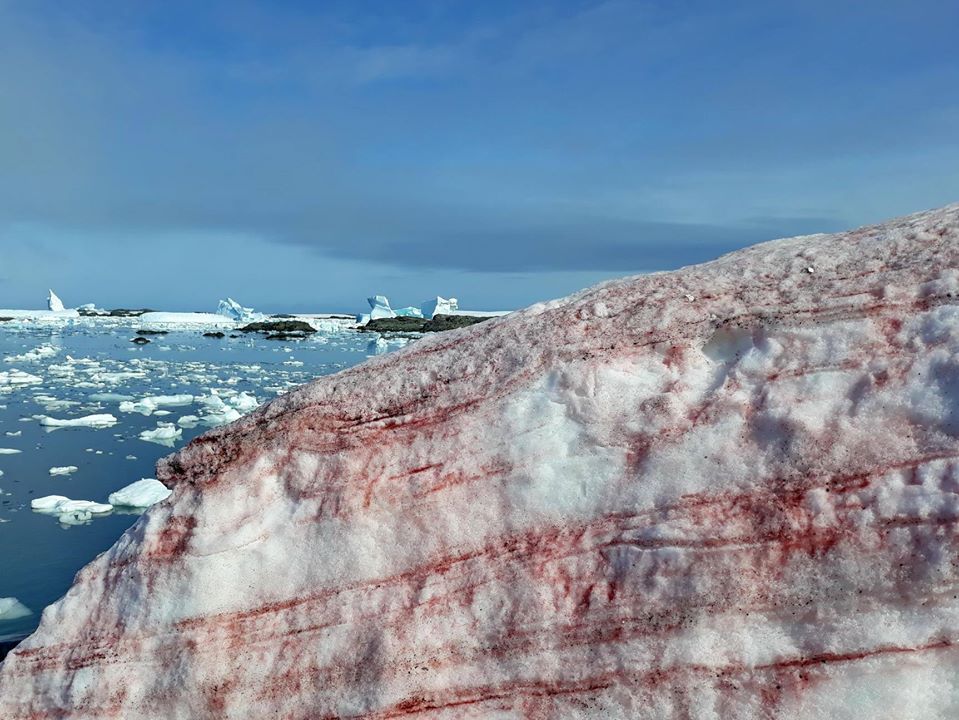Are my eyes playing tricks or did the snow in Antarctica turned red? That’s what many people recently asked after seeing viral photos from a Ukrainian based, fully covered by red or watermelon snow.

But there’s a logical explanation behind the phenomenon. The color is due to the flowering of thousands of unicellular algae called Chlamydomonas nivalis, which contain red carotene (astaxanthin) to protect against ultraviolet radiation.
The substance “acts as a sunscreen, protecting the algae from the dreaded ultraviolet radiation, but allowing the passage of other wavelengths necessary to perform photosynthesis,” said the Spanish physicist Mar Gomez on a Twitter thread.
The viral photos were captured by marine ecologist Andrey Zotov from the National Academy of Sciences of Ukraine while he was doing research in the area. He and his colleagues identified the green algae, common in icy and snow regions, with a microscope.
Zotov explained that the green algae sleep during the winter and then wakes up later in the year thanks to the higher temperatures and the sunlight. The algae use the sunlight and the meltwater to bloom, which is the phenomenon seen in the photos.
But this is not exclusive to the green algae, as there are more than 350 different types that can survive extreme temperatures.
The green algae have a two tail-like structure that allows them to swim. When they mature, they lose that mobility but develop features to survive the extreme temperatures, including an insulating cell wall and a layer of red carotenoids, changing their appearance from green to orange to finally red.
At the same time, the carotenoids help the algae to absorb warmth, creating more meltwater for them to thrive. While this is helpful for the algae, it’s not so much for the planet, as the algae bloom has been found to contribute to climate change.
In 2016, a study concluded the snow algal blooms decreases the amount of light reflected from the snow by 13% in one melt season in the Arctic. At the same time, in 2017, researchers argued microbial communities, including the algae, contributed to more than a sixth of the snowmelt in the locations they were present.
Temperature records continue to be broken in Antarctica, one of the regions in the world most affected by climate change, causing the rapid melting of snow and ice. Since the 1950s, the temperature in Antarctica has risen by more than 0.05 °C (0.09 °F) per decade.
Between 1979 and 2017, Antarctica has experienced a sixfold increase in yearly ice mass loss — and this rate doesn’t seem to be slowing down. During this period, global sea levels rose by almost 13 millimeters (half an inch), according to a recent study.


